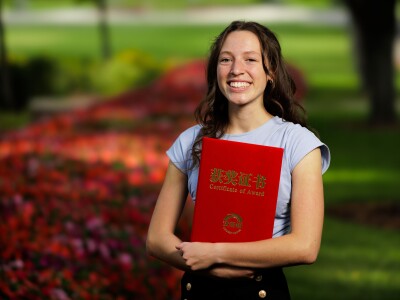Academic papers from study published in both CELL, CANCER CELL

Two Brigham Young University researchers are principal contributors to the largest comprehensive study to date on how cancer spreads and affects proteins in the body.
As part of the National Cancer Institute’s Clinical Proteomics Tumor Analysis Consortium, BYU biology professors Matthew Bailey and Sam Payne have analyzed more than 1,000 tumors across 10 types of cancer, providing a massive data set that could potentially lead to new protein-based therapies.
“The data tells a story, and it is my job to understand the implications of that story,” Bailey said. “We are starting to get a more complete picture of cancer and the consequences of genetic mutations on proteins.”
For years, scientists have known that genetic mutations cause cancer, but understanding the consequences of these mutations, especially in proteins, is still largely unknown. There are roughly 20,000 proteins in the human body that receive complex instructions from DNA to structure, regulate, and control critical functions in each cell. Genetic mutations disturb this process, sending faulty instructions, and sometimes initiating cancer growth. Understanding what proteins work together could lead to therapeutic interventions that block tumor growth
To learn how cancer interacts with proteins, the research team collected tumor 1,064 samples from cancer patients and contrasted them with healthy, non-cancerous tissue. They analyzed DNA, RNA, and protein levels in these samples across two types of lung cancer, and one kind of colon, ovarian, kidney, uterine, pancreatic, breast, and brain cancer. The massive amount of effort expended, and data procured, on behalf of this project gives insight into how cancer operates from start to finish.
“This project aims to describe what a dysfunctional cancer cell does,” said Payne, a proteomics expert. “In order to treat the disease better we must diagnose the disease better. We need to understand what that cell is doing.” Payne’s lab was essential for data procurement for the entire study. His detailed processes extracted and prepared the information for the rest of the 120-person research team.
The unique size and breadth of analysis is explained in a group of research articles, published in the prestigious academic journals, CELL and CANCER CELL. Data from these papers will also serve as a beneficial resource for other scientists.
Other contributors to the National Cancer Institute’s Consortium and to the published papers are researchers from Washington University in St. Louis, Baylor College of Medicine, the Broad Institute of MIT and Harvard, the Dana-Faber Cancer Institute, and many other affiliations from around the world.
“BYU’s slogan — ‘Enter to Learn, Go Forth to Serve’ — plays a prominent role in our research,” Payne said. “The 25 students from my lab working on this project for the past several years have found that improving people’s temporal lives and relieving suffering through cancer research is a great example of life-long service.”



